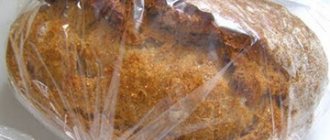Home/Expiration date/Sausages
Sausage is one of the most popular food products. The main ingredient in its production is minced meat in a shell. Since it is perishable, its total shelf life is short. But this is not an obstacle for many people to buy this delicacy. To minimize the risk of loss, you need to find out what the actual shelf life of sausage is. This material will be covered in the article.
Normative base
The legal norm regulating the shelf life of sausage is referred to as GOST. It contains individual standards for each type and type of sausage. This is a national standard of the Russian Federation, which includes the main criteria and requirements for sausage products, in particular for their storage. The standard contains a classification by category. Based on this, such products can be classified as groups A and B.
Attention! If you have any questions, you can chat for free with a lawyer at the bottom of the screen or call Moscow; Saint Petersburg; Free call for all of Russia.
- Category A. This is a product containing a mass fraction of muscle tissue of 60%. Water that was lost during heat treatment is not taken into account.
- Category B. This is a product that contains 40-60% muscle tissue, excluding liquid lost during heat treatment. This indicator is determined by calculation method.
Note:
Usually the shelf life of sausage is indicated by the manufacturer. Classic requirements require a temperature range of 0-6 degrees and a relative humidity of up to 75%.
The standard states that the shelf life of sausage depends on several factors:
- compound;
- quality and material of packaging (shell);
- type of product;
- variety;
- storage method.
Description
Raw smoked sausage is a delicious meat product. It is classified as elite. The delicacy cannot be confused with any other meat delicacy, which has long become a favorite in many families. Scientists have not been able to reliably establish the time when raw smoked sausage was invented. But the fact that this product originated from dried meat has been known for a long time.
Raw smoked sausage has always been considered a sign of prosperity, because the cost of the product is quite high. Previously, the product was bought for the holiday table, today the delicacy can be seen in the refrigerator quite often. The tasty product is eaten for breakfast and dinner, and also taken with you as a snack on the road or to work.
Raw smoked sausage is very nutritious and high in calories, because the meat of animals and birds classified as the highest grade is always used to prepare this delicacy.
Today, raw smoked sausages are easy to buy in any store, but they can also be easily prepared at home. A huge assortment of delicious delicacies allows you to satisfy any gastronomic cravings.
How to determine expiration date?
To determine the fact that the shelf life of the sausage is coming to an end, just look at the labeling: it will indicate the date when the product was produced and the time from which it becomes unusable. If for some reason this indicator is missing, or the packaging was lost or thrown away, you can determine the expiring shelf life of the sausage product using organoleptic methods:
- appearance : over time, the color of the sausage changes (especially along the cut edge) and can become whitish, greenish, sometimes spots appear on the surface, a slight coating, drying out;
- smell : food with expiring storage time has a characteristic “aroma”, it is noticeably different from that which appears in a fresh product, for example, it becomes more pronounced and pungent, sharp, and may have a sourish or sweetish, salty “tint”;
- tactile sensation : if you touch food that is nearing its expiration date, it will seem less elastic and may become covered with a slight slippery or sticky coating;
- taste : throughout the entire period of eating, the taste characteristics of the sausage are subject to change.
Additional information
These phenomena apply to absolutely all types and varieties. But sometimes the signs may not be noticeable. Therefore, it is recommended that when purchasing sausage, you immediately pay attention to the packaging, which indicates the period of suitability for consumption and the production date.
Is it permissible to use an expired product?
The legislation of the Russian Federation categorically prohibits the sale of sausage products with an expired shelf life. The seller faces heavy fines, loss of license and store closure.
You should not eat sausage that has expired. You can often hear that such an attempt ended quite successfully. However, you should be aware that the health risks are enormous. A stale product causes poisoning of varying degrees of severity. Main features:
Bacterial infection is very dangerous. Spoiled meat products harbor bacteria of the genus Clostridium, which can cause botulism. And such a disease causes serious consequences, even death.
The shelf life and storage of sausages helps eliminate the risk to human health. Subject to storage conditions, these parameters indicate how long the sausage can be eaten. Long-term storage is ensured by the refrigerator, but only a fresh product will provide true pleasure.
If you find an error, please select a piece of text and press Ctrl+Enter.
Source
Shelf life depending on the type of casing
This factor has a direct impact on the period of possible suitability for use. Natural and artificial materials are used as raw materials for the manufacture of shells. In the first case, the intestines of animals are used, in particular sheep, pigs, and cows. In the second situation, plastics, viscose, cellulose, and fabric elements are taken as raw materials. It is synthetic products that are most often used in the manufacture of sausage packaging materials. This is due to the fact that they give the finished product a longer shelf life compared to natural casings.
Additional Information
Among artificial sausage coatings, polyamide material is often used. This is due to the fact that it is extremely durable and reliable, has a large number of antibacterial qualities and prevents the penetration of microbes and bacteria into food. A coating of this type is resistant to UV rays, protecting the sausage from premature spoilage, the appearance of excess moisture, and foreign odors. In such packaging, food can retain its consumer properties unchanged for several days.
Products that are cut and packaged in supermarkets can be stored for a week if there is a refrigerator. Currently, sausages are increasingly appearing that are packaged using new technology. Packages can be filled with carbon dioxide and other substances that prevent the penetration and development of bacteria and microbial elements. As a result, the shelf life of the finished sausage product is significantly extended.
Natural casings
They are used less and less due to ensuring only a short shelf life of the sausage. Producing food products in such packaging is unprofitable for the manufacturer and the retail chain, because they begin to deteriorate just a few days after release, even if they are not unpacked.
Semi-synthetic materials
This type of sausage coating is impermeable, so it can easily be used in the production of various types of products. Unlike natural casings, the shelf life is about 2 weeks, subject to compliance with the general requirements established by GOST.
Vacuum shell
This progressive type of coating ensures longer shelf life of the product. But after opening, it is recommended to use the sausage as quickly as possible in order to prevent losses from spoilage. The average period of suitability for consumption in such a shell ranges from two weeks to a month, sometimes more.
Polyamide coating
It is used for packaging boiled and boiled-smoked sausage and contributes to its maximum preservation.
It is important to choose the type of coating wisely if you want the product to retain its presentation and consumer qualities for the longest possible time. It is worth remembering that the packaging must be completely clean and dry, which will significantly extend the shelf life of the sausage.
Harm from sausage - how do sausages and frankfurters harm human health?
Why did doctors officially recognize sausages and frankfurters as unhealthy products? What in their composition provokes the development of stomach cancer and other diseases?
How are sausages and sausages harmful to health?
The dangers of sausage are not just a myth propagated by vegetarians. For several years now, the World Health Organization has compared the health risks arising from regular consumption of processed meat (sausages, hot dogs and other processed foods) with the danger posed by smoking cigarettes and using asbestos (1).
Experts note that processed meats significantly increase the risk of intestinal cancer and strongly recommend limiting the consumption of such products to 50 g per day. But what is in the composition of sausages and sausages that provokes such negative processes, and how much does a sausage that is “safe” for health cost?
What exactly is harmful in sausage?
It is necessary to understand that modern sausages are a complex chemical product, only a small part consisting of what an ordinary person could call “meat”. None of the key ingredients in the sausage can be considered natural, since they all undergo multi-stage and very aggressive processing.
Separately, it is worth noting that sausages and sausages are strictly prohibited from frying, boiling, or subjecting them to other heat treatment - the components they contain can oxidize and change under the influence of high temperatures, becoming even more powerful carcinogens that provoke various types of cancer.
Shelf life of boiled sausage
In the Russian Federation, the production and storage standards of this type of product are regulated by the GOST 52196-2011 standard. Boiled sausages are made from carefully salted minced meat. Then they are cooked at a temperature of about 80 degrees Celsius. Based on the specific formulation, such products may fully or partially include soy, a meat substitute, and other similar ingredients. Boiled sausages contain the maximum amount of water, which explains their shortest shelf life. According to GOST, these products must be sold within a certain time:
- meat loaf, boiled products - 72 hours before;
- liver, blood, as well as sausages and sausages belonging to the 1st and 2nd grade - within 48 hours;
- jelly, blood and liver products - up to 12 hours.
As for storage time, they depend on its variety, type of shell, and conditions.
| Product name | Doctoral | Dairy | Livernaya | Sausages |
| In a refrigerator - if the “stick” has not been started; - if it is started (opened) | 2-4 weeks 1 Week | 1 Week 4-5 days | 2-3 weeks 6-10 days | 1 Week 4-5 days |
| In the freezer | Boiled sausage is a product that is not suitable for keeping in the freezer, because after defrosting there is a risk of getting a tasteless product with an unusable consistency, which is caused by the high water content. If you decide to store in the freezer, it is best to choose a vacuum-packed product. The average shelf life is 5-6 months. | |||
| At room temperature | 4-5 hours | 2-3 hours | 5 o'clock | 3-4 hours |
Types and varieties of sausages. Classification
It is not difficult to get confused in the wide variety of sausages that are produced in modern meat processing plants and go on sale. To clarify this issue, there is the following product classification:
Boiled sausage and ham
This sausage, beloved by adults and children, is used for sandwiches and also for making pizza. The most famous varieties were invented back in the 30s. years of the last century. Their recipe has not been lost and is still used today. This product is prepared from pork, beef or poultry. Lard, milk, eggs, tongues and various spices are added to this sausage, depending on the recipe. The meat is ground to a homogeneous consistency and cooked at a temperature of 80°C.
There are two types of boiled sausages:
- With a homogeneous consistency (structureless). Among them are “Doctor’s”, “Dairy”, “Diabetic” and others.
- Interspersed with meat or bacon (structural). These are “Lyubitelskaya”, “Veal”, “Mortadella” and other sausages.
Boiled sausages and sausages are prepared using the same technology, but these products should be boiled or fried before use.
Shelf life of boiled sausage
Storage standards for boiled sausage are established according to GOST 52196-20011 (BOILED SAUSAGE PRODUCTS). Such products may contain soy and other meat substitute ingredients, as well as large amounts of water. This composition determines the short shelf life of boiled sausage.
In the refrigerator, with whole packaging , the product has the following shelf life:
- “Doctoral” – 2-4 weeks;
- “Dairy” - 1 week;
- “Livernaya” - 2-3 weeks;
- "Sausages" - 1 week.
When the package is opened :
- “Doctoral” – 1 week;
- “Milk” - 4-5 days;
- “Livernaya” - 6-10 days;
- "Sausages" - 4-5 days.
It is not recommended to store boiled sausages in the freezer due to the fact that they contain a large amount of water, which crystallizes when frozen. After defrosting, the product may lose its taste. But if you still decide to freeze boiled sausage, it is best to choose a product in vacuum packaging, because the film does not allow moisture to pass through and the atmosphere of the freezer cannot spoil the sausage. The optimal ratio of oxygen and inert gas inside the package allows you to significantly increase shelf life.
The shelf life of boiled sausage in the freezer is 5-6 months.
At room temperature , the shelf life of boiled sausage is sharply reduced:
- “Doctoral” - 4-5 hours;
- “Milk” - 2-3 hours;
- “Livernaya” - 4-5 hours;
- “Sausages” - 3-4 hours.
Cooked smoked sausage
This sausage is prepared as follows: the salted minced meat is first kept for up to two days, then ground again with spices and pieces of bacon, smoked, boiled and smoked again. As a result, the product acquires a granular structure, with small inclusions of bacon. Its color can vary from pink to dark burgundy.
The sausage is more flavorful due to the large amount of spices and smoking. This includes all kinds of cervelat, as well as “Moscow”, “Vienna” and “Delicacy” sausages.
Shelf life of boiled smoked sausage
GOST R 55455-2013 (BOILED-SMOKED SAUSAGES) - tells us that it is best to store boiled-smoked sausages at an air humidity of 75-78%. Pay attention to the food additives in the product (E262. E325. E326) - they significantly extend the shelf life (in the refrigerator up to 45 days), but do not provide any particular benefit to the body.
If you keep boiled smoked sausage in the refrigerator (temperature from 0°C to +6°C), then its shelf life will be no more than 10 days.
In the freezer , at low temperatures, it increases to 75 days.
Semi-smoked sausage
This type includes some servelats, “Krakow” sausage, “Hunter” and “Amateur” sausages. Its heat treatment is somewhat different than that of boiled-smoked meat: the minced meat is first fried, then boiled, smoked, cooled and dried. This causes the color of the product to range from pink to dark red. The taste and aroma are rich, which indicates the large number of spices that are added to it.
Shelf life of semi-smoked sausage
Semi-smoked sausage is stored for quite a long time, due to the fact that it does not contain much water, but there is an order of magnitude more salt than boiled sausage. It is best to hang the sausage or store it in factory boxes. You can read the expiration dates and storage conditions, as well as the requirements for the production of semi-smoked sausages in GOST 34162-2017 (SEMI-SMOKED SAUSAGE PRODUCTS).
- in the refrigerator for 10 days, provided it is packaged intact.
- At room temperature, shelf life is reduced to 4 days.
freeze semi-smoked sausage in the freezer , then its shelf life is extended to 3 months, but you should remember that after defrosting it must be consumed within 24 hours.
Smoked sausage
The minced meat for this type of sausage is made from shoulder and lard; the meat is taken only of the highest grade. It is not subjected to heat treatment, it is first smoked raw, then fermented (the process of converting sugar into lactic acid), and therefore its preparation can take more than a month. The formed loaves are subject to sedimentation, smoked and dried.
This sausage, like other smoked ones, contains pieces of bacon, a lot of herbs and spices. The color can range from dark red to maroon. This sausage is distinguished by its rich spicy taste, sometimes it can have a sour taste. Also, depending on the recipe, cognac is added to it, which significantly increases its final cost.
Shelf life of raw smoked sausage
The shelf life of raw smoked sausage is determined by GOST R 55456-2013 (RAW SMOKED SAUSAGES). It best preserves its consumer qualities in the refrigerator, but if this is not possible, you can hang the sausage in a dark and ventilated room where the temperature does not exceed 12°C. It should be stored in this form for no more than 3 weeks, however, it is possible that due to drying, the sausage stick may decrease in volume.
In the refrigerator , if the packaging is not opened, raw smoked sausage will last for 3 months. After opening, the sausage should be consumed within 2-3 weeks.
If you decide to freeze this product, you should pay attention to the integrity of the packaging.
in the freezer , unopened, for up to 9 months. If the package is opened, the shelf life is reduced to 2 months.
Dried sausage
To produce dry-cured sausage, horse meat, lamb, pork, and beef are used, while preservatives are used in minimal quantities. The cooking technology is similar to making raw smoked sausage. This is another type of fermented sausage. What is the difference anyway? The meat for this sausage is pre-marinated during the cooking process and is not smoked.
Often, dry-cured sausages are flavored with various wines, cognac and even honey. These include the famous “Italian salami” and “Spanish chorizo”. They are distinguished by a rich, rich taste - these are expensive and delicious types.
Interestingly, dry-cured and uncooked smoked sausages are divided into dry and semi-dry. Semi-dry ripen earlier due to the fact that starter cultures (preparations containing microorganisms and involved in the fermentation process) are added to them.
Shelf life of dry-cured sausage
To maximize the shelf life of dry-cured sausage, purchase it in vacuum packaging. It is best to store the product in the refrigerator, in the fruit section. To refresh sausage after long-term storage, simply wrap the stick in a linen cloth. For additional information, we advise you to read GOST 33708-2015 (RAW SMOKED AND DRY-DRYED SAUSAGE PRODUCTS).
In the refrigerator , if you have not yet cut the stick and the packaging is not damaged, the sausage can be stored for 3 to 5 months. Only 1 month when opened.
At room temperature 3-4 weeks if the packaging is not damaged.
Blood and liver sausages
These sausages are boiled. The main ingredient of blood sausage is veal, pork or bovine blood. It is prepared using a special technology. Various cereals are often added to them (for example, buckwheat, rice, barley, wheat). The color of these sausages is mainly dark burgundy. To prepare minced meat, by-products are used, which are pre-boiled. Liver sausages have a uniform consistency, a soft texture and a light gray color.
Shelf life of blood sausages
Blood sausage does not last long, due to the fact that it contains few preservatives, and all components, including the casing, are of natural origin. To increase the shelf life, we recommend that you cut the fresh sausage into pieces, wrap it in food paper and put it in the freezer. All necessary information about blood sausage is described in GOST R 54670-2011 (BLOOD SAUSAGES).
In the refrigerator , at an air temperature of 0°C to +6°C, shelf life is no more than 5 days.
In the freezer the shelf life reaches 6 months.
Shelf life of boiled sausage in the refrigerator
If we take into account cold storage, then on average its duration ranges from 3 to 30 days, depending on whether the “stick” has been started or packaged, the type of product, the material and the quality of the packaging. If the coating is vacuum, and the sausage is doctor-grade and not yet started, it can lie for almost 1 month without losing its consumer qualities. If we are talking about a dairy variety that has already been started, then the duration of suitability can be reduced to several days (4-5).
Is it possible to freeze at home?
Generally speaking, yes, it is possible. After defrosting, sausages almost do not lose their taste.
- However, it is better to refrain from freezing boiled sausage. Due to the increased water content, this product may lose its structure, density and taste in the freezer. If there is no other choice, freezing boiled sausage can be done for up to 30 days.
- Cervelat and other varieties of raw and semi-smoked sausages can be safely placed in the freezer by first wrapping them in foil or placing them in a container. It is not recommended to use plastic bags for this purpose. At subzero temperatures, such products can be stored for up to 4 months.
- It is not recommended to freeze homemade, liver and blood sausage, as their taste can change significantly under the influence of low temperatures and subsequent defrosting.
Shelf life of raw smoked sausage
Features of storage of raw smoked products in the Russian Federation are regulated by GOST R 55456-2013. According to this standard, raw smoked sausage should be stored at a temperature of 5-8 degrees (that is, in the refrigerator). The shelf life of a sealed “stick” can last 3 months, but after opening it is necessary to use the product within 2-3 weeks. If an opened stick of sausage is placed in the freezer, it will remain there for 1-2 months, remaining usable.
For your information
If you store it in the freezer unpacked, the duration will “stretch” up to 9 months. To avoid premature damage, you should also pay attention to products in high-quality and reliable packaging.
What is the marking according to GOST?
Labeling, i.e. Information for consumers of food products is generally standardized by GOST R 51074-2003, which obliges the manufacturer to ensure that information is provided in a visual form that is easily accessible to the buyer. The following must be indicated:
- date of manufacture;
- best before date;
- storage conditions.
For products that are highly dependent on storage conditions, shelf life is indicated under different circumstances:
- in room conditions;
- in certain temperature conditions;
- in the freezer;
- if the packaging is damaged, etc.
In accordance with the Civil Code of the Russian Federation (Article 473) and Law No. 2300-1 (clause 2 of Article 19), the expiration date can be indicated in two ways:
- The deadline after which the product cannot be used for its intended purpose.
- The time period (for example, 12 months) during which the product can be consumed as food, with the obligatory indication of the date of manufacture.
The necessary information is provided in the form of text, symbol or drawing on the packaging, label, tag or attached sheet (insert). It is important that it is clear to any buyer.
Shelf life in vacuum packaging
Vacuum packaging material is a modern option for food storage; it is also widely used for meat products. The advantages of this method of storing products include:
- saving money and profitability;
- possibility of protection from external factors;
- extension of storage duration;
- quality improvement;
- no risk of bacterial penetration;
- long-term freezing.
Attention
The service life of solid “sticks”, thanks to the use of vacuum, is extended to 25-40 days.
Shelf life in and without refrigeration
The classic storage method is to place the sausage in the refrigerator, which provides optimal temperature and humidity parameters. Let's consider the duration of suitability for use provided that the “sticks” are intact, i.e. without opening.
| Product type | In a refrigerator | At room temperature |
| Boiled | 1-3 weeks | 2-5 hours |
| Raw smoked | 4 months | 3-4 weeks |
| Dry-cured | 6 months | 4 weeks |
| Home | 1-2 months | no more than a day |
| Fish (boiled and smoked, respectively) | 2 weeks and 3 months | 3 hours and 1 week |
| Semi-smoked | from 10 days | 3-5 days |
How to store a home product?
The optimal way to store homemade sausage differs from storing its store-bought counterpart. If possible, homemade products should be placed in clay pots and filled with hot pork fat.
You can add bay leaf, cloves or other spices to the fat . After waiting until the consistency of the fat becomes similar to wax, the pots should be closed, tied with a rope and placed for storage in the pantry or refrigerator.
Either raw sausage or boiled sausage for 2-3 minutes should be placed in pots. After removing from the pot, the product is either baked in the oven or fried in a frying pan.
If you plan to store homemade sausage for several months, it is best not to add garlic or onions to it. The product can be placed in the freezer after drying it with a napkin.
How to return expired sausage to the store?
The consumer has the right to return expired sausage to the store, this is evidenced by the provisions of the law “On the Protection of Consumer Rights”, Art. 18. However, several key conditions need to be taken into account.
- Study the law to be able to confidently argue your position.
- Return the goods to the store. If the buyer still has the receipt document, then there will be no problems, especially if the store greatly values its reputation. Even if there is no receipt, this should not be an obstacle to returning the item.
- Contact ROSPOTREBNADZOR. If store employees refuse on principle to return your money for goods of inadequate quality, you have the right to contact this organization and ask what to do in this situation, directly on the hotline.
- Write a claim. If the issue is not resolved peacefully, you need to start filing a claim. It should include several points:
- addressee's name;
- information about the product item (price, date of purchase, expiration date from packaging);
- the essence of claims and complaints;
- list of specific requirements and proposals.
IMPORTANT
When receiving a product overdue, the consumer has the right to return his money, replace the product with an analogue, and pay less, provided that he is ready to continue to use the purchased product.
What to take?
The TOP 5 favorite “road” food looks like this:
Chicken . It does not spoil for a long time, and it also has less fat and calories than beef. However, you should not take chicken bought ready-made on the road. Firstly, in the tents where grilled chicken is prepared, the most basic rules of hygiene are sometimes not observed, and an upset stomach is one of the worst misfortunes that can happen to travelers, and secondly, while the chicken is spinning on a spit, it carcinogens accumulate. These substances increase the risk of malignant tumors.
Eggs . 1 boiled egg contains only 80 kcal, gives a feeling of fullness and can be stored for quite a long time even without refrigeration.
Quick porridges, instant noodles . As a “one-time” lunch or breakfast, they will not cause much harm to your health. However, read labels carefully. To improve the taste of quick porridges, manufacturers often flavor them with sugar. The more sugar in the porridge, the more calories it contains. It is also worth paying attention to additives; it is better if the names of the fruits are indicated on the label, rather than flavor codes. As for noodles, it is better to choose one that has fewer spices - you should not provoke an exacerbation of gastritis! The insidiousness of noodles also lies in the fact that, despite the high nutritional value of this product, a feeling of hunger very quickly arises after it: the finest flour is used to make noodles, it is cheaper and, most importantly, is absorbed instantly.
Related article: Why does olive oil freeze in the refrigerator?
Pies and pasties . It is better to choose baked pies. Fried pies, chebureki and belyashi contain too much fat. Among the most non-perishable fillings are rice, boiled eggs, cabbage, and apples.
Smoked sausage . Among the disadvantages are the abundance of fat, calories, salt and spices. Among the advantages is only a long shelf life. But for long trips it is better to buy not a loaf of sausage, but several vacuum packages with slices. Such containers further extend the life of the products.
Enterosorbent . It’s always better to play it safe and take a modern emergency medicine with you on the road in case of food poisoning and traveler’s diarrhea. After all, hot pies and other delicacies at stations look so tempting, and it is very difficult to maintain the freshness of all the stored food in extreme heat.
| When there is? | |
| How long can food last without refrigeration? Here are approximate times at moderate air temperatures: | |
| More than two weeks | Cheese in sealed packaging |
| 72 hours | Boiled sausage in vacuum packaging |
| 48 hours | Boiled or fried chicken |
| 24 hours | Boiled eggs, jacket potatoes |
| 12 hours | Boiled potatoes |
| 6 hours | Undressed salads |
Eating expired sausage
Eating food that has expired is prohibited. If a consumer decides to eat expired sausage, the consequences will be strictly his responsibility.
For your information
It is generally accepted that the manufacturer indicates the shelf life “with a reserve”, i.e. if the packaging indicates that it is suitable for use for a month, then you can “throw in” a couple of days by this time, during which you can continue eating without risks for the stomach and overall health.
To answer the question whether it is possible to eat expired sausage, or whether it is better to abstain and immediately throw the food in the trash bin, you need to look at its condition (see the paragraph “how to determine the expiring date”). If there are obvious signs of spoilage (stains and discoloration, sour, musty odor, mucus or sticky residue), you should refrain from consuming the product. Otherwise, you can get poisoned and experience unpleasant symptoms such as nausea, vomiting, diarrhea, flatulence, dizziness, and fever.
Signs of corruption
The first sign that sausage should not be eaten is its unpleasant smell. Also, light plaque and mucus appear on the surface of the spoiled product. These signs appear first of all in the folds of the sausage, as well as in places tied with rope.
To protect yourself from the risk of purchasing a spoiled product in a store, you should make sure that its packaging is intact. There should be no wateriness inside the vacuum packaging. The shelf life must be indicated on the packaging - not in the form of a sticker, but in the format of information on the main label. In principle, it is strictly not recommended to purchase a product on which the shelf life is not indicated.
Nuances
To extend the shelf life of some products, certain nuances must be observed:
- if the sausage is weathered, you can place it in cold milk for 20-30 minutes, this will help it improve its consumer qualities;
- to avoid rapid drying, the cut edge can be rubbed with egg white or animal fat;
- To keep the slices longer in the freezer, it is recommended to wrap them in foil;
- You cannot store it in a plastic bag, you should wrap it in parchment.
Thus, the period during which sausages are suitable for use is determined based on several factors and is regulated by state standards.
Comments Showing 0 of 0
Useful tips
Before storing the sausage in the refrigerator, you can wrap it in parchment or foil. This will extend the shelf life of the product.
But you can’t wrap it in cling film or place it in a plastic bag. Under such conditions, the sausage becomes damp and a favorable environment is created for the development of pathogenic bacteria. It is better to store boiled sausage in vacuum containers that are sealed tightly.
The cut of the sausage can be greased with fat or vegetable oil so that it does not darken or dry out.











